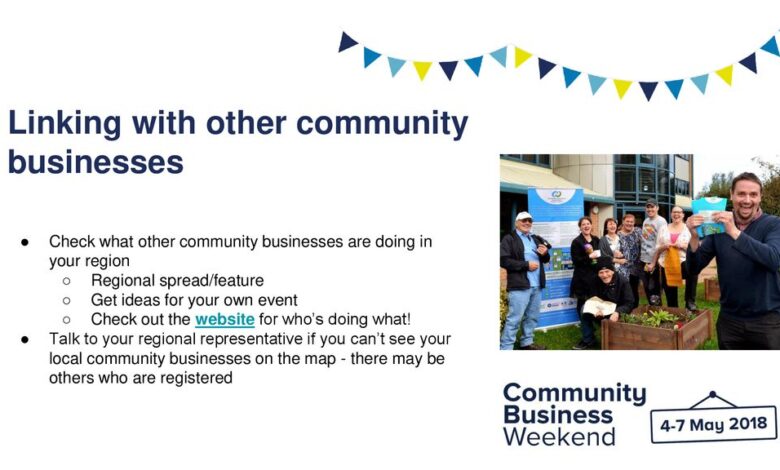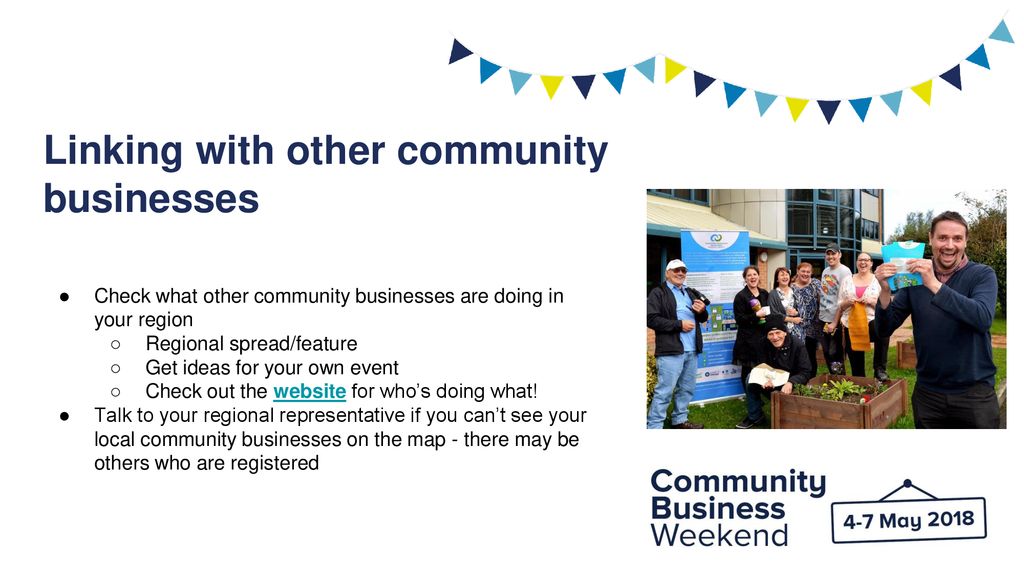
Connecting Local Handmade Businesses with the Community
Connecting local handmade businesses with the community sets the stage for a vibrant exchange of creativity and support. This initiative fosters a sense of belonging and shared passion, offering a unique opportunity for both artisans and community members to thrive.
This exploration delves into the multifaceted strategies for building bridges between local businesses and their communities. We’ll examine various approaches, from organizing engaging events to utilizing innovative online platforms, to truly connect and uplift these local artisans.
Understanding the Community
Connecting local handmade businesses with their community requires a deep understanding of the diverse groups and individuals within that area. Knowing the nuances of local values, interests, and communication styles allows for more effective outreach and fosters stronger relationships. This understanding is crucial for crafting targeted marketing strategies and events that resonate with the community.A successful approach involves identifying key community figures and recognizing the various platforms and organizations that shape local interactions.
This deep dive into community dynamics enables businesses to tailor their messaging and engagement strategies for optimal impact.
Different Types of Local Communities
Understanding the different types of local communities is essential for effective outreach. Neighborhood associations, online forums, and cultural groups all represent distinct avenues for connecting with potential customers and supporters. Each community type has its own unique characteristics, interests, and communication methods, which must be considered for targeted engagement.
- Neighborhood Associations often organize events like block parties, community clean-ups, and neighborhood fairs. These events are excellent opportunities for handmade businesses to showcase their products and connect with residents. Neighborhood watch groups can also be a resource for local business information.
- Online Groups (Facebook groups, Nextdoor, local forums) are becoming increasingly important for community interaction. Active online groups often discuss local issues, share recommendations, and organize events. Businesses can engage by sharing their products, participating in relevant discussions, and offering promotions.
- Cultural Groups represent a significant segment of the community. Understanding the specific interests and values of cultural groups allows for more relevant and meaningful interactions. Participating in cultural festivals or events can expose businesses to new customers and build stronger community ties.
Activities and Events Fostering Community
Community-building activities and events are crucial for fostering connections and enhancing local relationships. These events create opportunities for interaction, allowing businesses to showcase their products and connect with potential customers in a relaxed setting.
- Local Festivals and Fairs: These events are a great way to expose handmade businesses to a large audience and allow them to interact with the community in a casual setting.
- Community Workshops and Classes: Offering workshops or classes related to the craft can build community engagement and interest. This can include anything from jewelry making to pottery classes.
- Pop-up Shops and Markets: Pop-up shops provide an opportunity for businesses to engage directly with the community and demonstrate their products in a dynamic setting.
Importance of Understanding Local Values and Interests
Understanding local values and interests is crucial for crafting targeted marketing strategies and events that resonate with the community. Tailoring products and messages to local tastes ensures relevance and fosters positive engagement.
- Understanding Local Preferences: By understanding local tastes and preferences, businesses can adjust their products or offerings to better suit the community’s needs and desires.
- Cultural Sensitivity: Respecting the values and customs of the community is essential for building positive relationships. Cultural sensitivity ensures that all individuals feel included and valued.
Identifying and Engaging with Key Community Figures
Identifying and engaging with key community figures is essential for successful outreach. These individuals often hold influence and can help amplify a business’s message within the community.
- Local Leaders and Influencers: Identifying local leaders and influencers can help businesses reach a wider audience and gain credibility within the community.
- Community Organizations: Collaborating with community organizations can help businesses connect with a broader network of potential customers.
Community Engagement Strategies
A well-defined strategy is essential for successful engagement. This involves understanding the nuances of each community type, including their values, interests, and communication styles. This understanding allows businesses to tailor their engagement approach for maximum impact.
| Community Type | Characteristics | Typical Interests | Engagement Strategies |
|---|---|---|---|
| Neighborhood Associations | Local focus, organized events, strong community ties | Community events, local issues, neighborhood improvements | Sponsor neighborhood events, offer workshops, participate in block parties |
| Online Groups | Digital interaction, frequent discussions, online community | Local news, recommendations, shared interests | Share product updates, participate in relevant discussions, offer promotions |
| Cultural Groups | Diverse representation, cultural events, shared heritage | Cultural celebrations, heritage activities, community events | Partner with cultural organizations, participate in festivals, offer culturally relevant products |
Identifying Local Handmade Businesses: Connecting Local Handmade Businesses With The Community
Unearthing the hidden gems of local handmade businesses is crucial for fostering a vibrant community. Supporting these artisans directly connects you to the unique stories and craftsmanship behind each piece, while also bolstering the local economy. This section explores how to discover these talented individuals and the diverse products they create.Discovering local handmade businesses is more than just browsing online; it’s about actively seeking them out and engaging with the community.
Supporting local handmade businesses is crucial for community connection, and it’s exciting to see how innovative solutions like the use of alternative materials in sustainable energy, like in the future of sustainable energy looks to alternative materials , could inspire new, eco-friendly products. This could lead to exciting collaborations between local crafters and sustainable energy pioneers, further strengthening our community bonds.
Various avenues exist for finding these hidden talents, ranging from dedicated online directories to vibrant local events. Understanding the different types of goods and services they offer can help you connect with the right businesses for your needs.
Resources for Discovering Local Handmade Businesses
Discovering local handmade businesses requires a proactive approach. Online directories specifically curated for artisan businesses offer a valuable starting point. These directories often feature detailed profiles, allowing you to peruse the products and services offered by each artisan. Local events, such as craft fairs, farmers’ markets, and pop-up shops, provide an excellent opportunity to interact with artisans in person.
Social media platforms, with their dynamic and engaging nature, also play a significant role in showcasing and connecting with local artisans. Following local artisan pages allows you to discover new businesses, see their latest creations, and often find special promotions or events.
Types of Handmade Goods and Services
Local handmade businesses offer a wide array of products and services. From handcrafted jewelry and pottery to bespoke clothing and custom-designed furniture, the range is extensive. Many artisans also provide services such as calligraphy, custom illustration, or personalized pet portraits. This diversity highlights the creativity and talent present within the local community.
Examples of Local Handmade Business Success Stories
Numerous local handmade businesses have demonstrated remarkable success by focusing on quality craftsmanship and building strong customer relationships. One example is a local ceramicist who, starting with small-scale sales at local markets, has grown their business to include custom commissions and collaborations with local restaurants. Another successful story involves a seamstress who started by creating custom clothing for friends and family, eventually establishing a thriving business creating unique and sustainable clothing lines.
These success stories underscore the potential for local handmade businesses to flourish within the community.
Comparison of Handmade Business Types
| Business Type | Goods/Services | Typical Customer Base | Unique Selling Points |
|---|---|---|---|
| Pottery | Vases, bowls, plates, sculptures, decorative items | Home decor enthusiasts, collectors, gift-givers | Unique designs, often hand-thrown or wheel-thrown, natural materials |
| Jewelry | Necklaces, bracelets, earrings, rings, brooches | Fashion-conscious individuals, collectors, gift-givers | Unique designs, often using gemstones, metals, or other materials |
| Clothing | Custom-designed garments, accessories, eco-friendly clothing | Individuals seeking unique styles, environmentally conscious consumers | Sustainable materials, one-of-a-kind designs, often made-to-order |
| Furniture | Custom-designed furniture, home decor items | Interior designers, homeowners, renovators | Sustainable materials, personalized designs, made-to-order |
Bridging the Gap
Connecting local handmade businesses with the community is more than just a marketplace; it’s about fostering a vibrant local economy and strengthening community bonds. It requires careful planning and execution to ensure both businesses and residents benefit. Successful events require a thoughtful approach to attracting both vendors and attendees.A key element in this process is facilitating interaction between the community and local artisans.
Creating a platform for these connections allows for the exchange of ideas, support, and a shared sense of pride in local talent. It’s a win-win situation, where the community discovers unique treasures and artisans gain valuable exposure and patronage.
Organizing Community Events
Effective community events require careful planning and execution. Events such as workshops, pop-up shops, and farmers’ markets can effectively connect local businesses with potential customers. These events need to be designed to attract a diverse audience and provide a welcoming environment for both vendors and attendees.
- Workshops: Workshops provide hands-on learning experiences, allowing attendees to interact with artisans and learn new skills. This provides a unique experience for attendees, fostering a deeper appreciation for the craftspeople. Examples include pottery-making, jewelry design, or candle-making workshops.
- Pop-up Shops: Pop-up shops offer a temporary retail space for local businesses to showcase their products. They are ideal for promoting new products or introducing a wider audience to existing businesses. They often occur in public spaces, such as parks or community centers, increasing their accessibility.
- Farmers’ Markets: Farmers’ markets provide a venue for local businesses to sell their goods, connecting them directly with consumers. They often feature a variety of products, including handmade crafts, food items, and locally grown produce. The community can support local businesses and enjoy fresh, seasonal products.
Showcasing Local Products and Talent
Effective promotion of local handmade businesses is crucial for success. Highlighting the unique skills and artistry of these businesses is vital for attracting customers and building a strong sense of community.
- Social Media Campaigns: Utilizing social media platforms to showcase products and highlight events is an effective strategy. Creating visually appealing content featuring the artisans and their products can create buzz and attract potential customers. Sharing stories and behind-the-scenes glimpses of the creative process adds a personal touch and fosters connection.
- Promotional Materials: Creating flyers, posters, and other promotional materials for events is vital. These materials should clearly communicate the event details, highlight the participating businesses, and create excitement for the event. Visual appeal is key.
- Partnerships with Local Media: Collaborating with local media outlets can increase the reach of the event. News articles, social media posts, and radio interviews can highlight the event and the participating businesses, creating greater awareness and promoting a sense of community.
Event Type Analysis
This table Artikels various event types, their target audience, required resources, and potential outcomes:
| Event Type | Target Audience | Required Resources | Potential Outcomes |
|---|---|---|---|
| Workshops | Community members interested in learning new skills, or individuals looking for a creative outlet. | Venue, instructors, materials, marketing materials. | Increased community engagement, skill development, exposure for artisans, revenue generation. |
| Pop-up Shops | Local residents, tourists, and community visitors. | Venue space, tables, marketing materials, security if needed. | Increased brand visibility, direct sales, new customer acquisition, exposure to new markets. |
| Farmers’ Markets | Families, individuals seeking fresh produce, local crafts, and food. | Permitting, setup space, marketing, security. | Direct consumer interaction, revenue generation, local food and craft promotion, and community building. |
Potential Sponsors, Connecting local handmade businesses with the community
A diverse range of local businesses and organizations can serve as sponsors for community events featuring local handmade businesses.
- Local Businesses: Retail stores, restaurants, cafes, and other businesses can support the event financially and/or by providing products or services.
- Community Organizations: Local non-profits, community centers, and other organizations can provide support and resources.
- Government Agencies: City or county governments may be willing to sponsor events to support local businesses and community initiatives.
- Local Businesses: Retail stores, restaurants, cafes, and other businesses can offer support.
Promoting and Marketing the Connection
Connecting local handmade businesses with the community is not just about bringing them together; it’s about creating a vibrant ecosystem where both thrive. Effective promotion is crucial to driving participation, engagement, and ultimately, a stronger sense of community. This involves carefully crafting strategies that showcase the unique offerings of the businesses while appealing to the community’s interests.A key aspect of success is understanding the target audience and tailoring the promotion to their preferences.
This means identifying the channels where they are most active and the types of content that resonate with them. By using a variety of channels and approaches, we can ensure that the message reaches a wide audience and fosters excitement about the local handmade scene.
Effective Strategies for Promoting Events and Workshops
To effectively promote events and workshops, consider a multi-faceted approach. Highlighting the unique value proposition of each handmade business is paramount. This includes emphasizing the quality, craftsmanship, and story behind each item. Strong visual storytelling, using high-quality photographs and videos, is essential. These visual elements should be accompanied by engaging narratives about the businesses and their products.
Compelling Content for Social Media Posts and Website Pages
Crafting compelling content is key to driving engagement. This involves using clear, concise language that effectively communicates the value of the businesses and the workshops. For social media, use eye-catching visuals. Showcase the handmade items in appealing settings. Consider using behind-the-scenes glimpses of the creation process to build a deeper connection with the audience.
This approach humanizes the businesses and adds authenticity. For website pages, use detailed descriptions of the products, highlighting their unique features and benefits. Include customer testimonials to build trust and credibility.
Importance of Building Brand Awareness
Building brand awareness is crucial for both the local handmade businesses and the community. It fosters recognition, trust, and loyalty. For businesses, this translates to increased sales and visibility. For the community, it creates a stronger sense of place and appreciation for local talent. By promoting the businesses effectively, we build a community that supports and values its own creators.
This approach also builds an ecosystem that fosters growth and innovation, ensuring the long-term sustainability of the local handmade scene.
Social Media Post Ideas
- Showcase a featured handmade item with a captivating image and a brief description of its unique qualities and the story behind it. Example: “Introducing the ‘Whispering Pines’ necklace, handcrafted with sustainably sourced wood and featuring intricate details. Learn more and order yours today!”
- Post a “Meet the Maker” feature, highlighting a local artisan’s background, inspiration, and the story behind their craft. Example: “Meet Sarah, the talented potter behind ‘Earthy Creations.’ Discover her passion for sustainable pottery and the inspiration behind her unique designs!”
- Announce upcoming workshops and events, including dates, times, locations, and a brief description of what participants can expect. Example: “Get ready to unleash your creativity! Join us for a pottery workshop with Sarah from ‘Earthy Creations’ on Saturday, October 28th at 10 AM. Space is limited; register today!”
Social Media Post Ideas Table
| Social Media Post Idea | Hashtags | Engagement Strategies | Expected Results |
|---|---|---|---|
| Showcase a handmade item with a captivating image and brief description | #localhandmade #supportsmallbusiness #artisan #handmadejewelry #[specific craft category] | Ask a question about the item, run a poll about design preferences, or ask users to share their favorite handmade items | Increased brand awareness, website traffic, and potential sales |
| “Meet the Maker” feature | #localartisans #handmadewithlove #smallbusinessowner #[specific craft category] | Encourage comments about the maker’s story, run a Q&A session, or invite users to share their support | Stronger community connections, increased brand loyalty, and positive brand perception |
| Workshop/Event announcement | #localcrafts #workshop #event #[city name] #[craft category] | Use a countdown timer, offer early bird discounts, or highlight limited spots | High attendance at workshops and events, growing interest in the community, and generating buzz |
Sustainability and Growth
Building a thriving connection between local handmade businesses and the community hinges on more than just initial introductions. Sustainable growth necessitates a focus on ethical practices, long-term partnerships, and a supportive environment that allows businesses to flourish. This fosters a reciprocal benefit, enriching both the community and the entrepreneurs.Ethical sourcing and production methods are crucial for the long-term viability of local handmade businesses.
These practices not only contribute to the well-being of the community but also attract conscious consumers.
Ethical Sourcing and Production Methods
Local handmade businesses often thrive on unique craftsmanship and materials. Prioritizing ethical sourcing ensures the integrity of the product and the well-being of the people involved in its creation. This includes fair wages, safe working conditions, and environmentally responsible practices. Transparency in these processes builds trust and fosters a stronger connection between the business and the consumer. Sustainable materials, like recycled or reclaimed goods, further enhance the ethical footprint of the business.
Long-Term Sustainability
A key aspect of maintaining the connection between businesses and the community involves ensuring long-term sustainability. This involves fostering a mutually beneficial relationship that supports both the business’s growth and the community’s well-being. Strategies for achieving this include building a community forum for regular feedback, offering mentorship programs, and developing collaborative marketing campaigns. Such efforts solidify the partnership and ensure the continued success of both the businesses and the community.
Benefits of Collaboration
Fostering collaboration between local businesses and community members creates a synergistic effect. This approach empowers both the businesses and the community, leading to greater economic vitality and social cohesion. Businesses gain access to a wider network of potential customers and valuable insights, while the community benefits from increased local economic activity and the promotion of unique products and services.
Collaborative events, like pop-up shops and joint workshops, serve as excellent platforms to showcase local talent and generate excitement.
Connecting local handmade businesses with the community is a fantastic way to support small businesses and build a stronger sense of local identity. It’s all about fostering those personal connections, and that’s where platforms like Hello world! come in handy, helping spread the word about these amazing, unique products. Ultimately, this kind of support directly benefits everyone involved, from the creators to the customers, and strengthens our local economy.
Successful Partnerships
Numerous successful partnerships between local businesses and community organizations demonstrate the positive impact of collaboration. For example, a local pottery studio partnering with a community center to offer pottery classes for children promotes artistic development and strengthens community ties. Similarly, a clothing design business collaborating with a local school to offer internship opportunities for students provides valuable learning experiences and fosters a sense of community pride.
These examples highlight the positive impact of collaborative initiatives.
Fostering a Positive and Supportive Environment
Cultivating a supportive environment for local businesses is essential for their long-term success and the overall well-being of the community. This includes providing resources and opportunities for growth, such as access to funding, mentorship programs, and business development workshops. Supporting the businesses also strengthens the community, as local employment and economic growth are fostered. Recognizing and celebrating the unique contributions of local businesses reinforces a sense of pride and strengthens community spirit.
Measuring Success and Impact
Successfully connecting local handmade businesses with the community requires a robust system for measuring progress and impact. This involves not only tracking attendance and participation but also gathering feedback to refine strategies and ensure the initiative’s long-term sustainability. Understanding the quantitative and qualitative data allows for adjustments and improvements in future projects.Measuring the success of this initiative involves more than just counting heads.
It’s about understanding the qualitative feedback and quantitative results to make informed decisions. This data-driven approach allows for a deeper understanding of what resonates with the community and the businesses involved, facilitating future iterations and improvements.
Key Metrics for Evaluating Success
Understanding the impact requires defining clear metrics. These metrics will serve as benchmarks for evaluating the success of the initiative and will help to identify areas for improvement. By consistently tracking and analyzing these metrics, the initiative can demonstrate its value and contribute to a more vibrant local community.
Data Collection Methods
Different data collection methods will provide a comprehensive understanding of the initiative’s success. This multifaceted approach ensures a holistic picture of the impact. Gathering information from various sources ensures a broader perspective and a deeper understanding of the initiative’s effectiveness.
- Event Attendance: Track attendance at workshops, fairs, and other events using registration forms, attendance sheets, or QR codes. This data allows for analysis of event popularity and potential adjustments for future events.
- Business Participation: Collect data on the number of handmade businesses participating in the initiative. Tracking participation rates provides insight into the initiative’s appeal to local businesses. For example, an increase in the number of participating businesses could indicate growing interest and a successful outreach campaign.
- Community Engagement: Gather data on the number of community members attending events and participating in workshops or initiatives. Use surveys, questionnaires, or feedback forms to understand the community’s perception of the initiative. This feedback allows for identifying areas for improvement.
- Feedback Surveys: Implement surveys for both businesses and community members. These surveys should address satisfaction levels, areas for improvement, and suggestions for future events. The surveys should include questions on how the event benefited the businesses, and what aspects of the event could be improved in the future. For example, a survey could ask about the quality of the venue, the effectiveness of marketing materials, and the overall atmosphere of the event.
Analysis Methods
Analyzing the collected data effectively will reveal patterns and trends. This allows for identifying what is working well and where improvements are needed. Using appropriate analysis methods is crucial for gaining valuable insights and making informed decisions.
- Attendance Analysis: Analyze attendance data to understand peak times, popular events, and reasons for low attendance at certain events. This data can be used to adjust the scheduling and promotion of future events.
- Participation Analysis: Track the number of businesses participating over time to identify trends in participation. This analysis helps in understanding the long-term sustainability and appeal of the initiative. If participation declines, this could indicate a need to improve the value proposition for businesses.
- Feedback Analysis: Review feedback from both businesses and community members. This feedback provides insights into what is working and what needs improvement. This can be analyzed by identifying common themes and suggestions. For example, if several respondents mention a need for more affordable products, the initiative can consider partnering with local wholesalers or promoting discounted pricing.
Example Metrics Table
| Key Metrics | Data Collection Methods | Analysis Methods | Expected Outcomes |
|---|---|---|---|
| Event Attendance | Registration forms, attendance sheets, QR codes | Frequency analysis, average attendance per event, comparison between events | Identify popular events, adjust event scheduling and promotion |
| Business Participation | Business registration forms, surveys | Trend analysis over time, comparison with previous periods, correlation analysis with marketing efforts | Determine the long-term sustainability and appeal of the initiative, adjust outreach strategies |
| Community Engagement | Surveys, questionnaires, feedback forms | Quantitative analysis of responses, qualitative analysis of feedback, thematic analysis | Understand community needs, identify areas for improvement in initiatives, adjust event programming to address community interests |
| Feedback from Businesses and Community | Surveys, focus groups, interviews | Identify recurring themes, summarize insights into actionable feedback, quantify the satisfaction levels | Enhance the initiative, improve the value proposition for businesses and community members |
Innovative Approaches

Connecting local handmade businesses with the community requires fresh thinking and innovative strategies. Traditional methods, while effective, often struggle to reach a broad spectrum of potential customers and support sustainable growth. This section explores innovative approaches that can overcome these limitations and build stronger, more inclusive connections.
Innovative Online Platforms
Building online marketplaces specifically for local artisans can significantly expand reach and create a vibrant community. These platforms can host virtual storefronts, facilitate direct sales, and provide a dedicated space for artisans to showcase their unique creations. They can also offer educational resources, workshops, and networking opportunities. Successful examples include Etsy, but the concept can be adapted to a local focus.
An example of such an approach could involve a dedicated website or app designed specifically for local craftspeople, featuring a user-friendly interface for browsing and purchasing items.
Community-Supported Initiatives
Community-supported initiatives foster a sense of shared responsibility and support for local businesses. These initiatives might include pop-up shops in community centers or parks, workshops and demonstrations, or collaborative events that showcase diverse crafts. For example, a monthly craft fair featuring local artisans could be organized in a local park, attracting a large number of attendees. This type of approach can foster a sense of community and provide a more personal shopping experience.
Targeted Marketing and Outreach
Using targeted social media campaigns, tailored email marketing, and collaborations with local influencers can help reach specific demographics. Leveraging social media, local publications, and community groups can help spread the word about the artisans and their work. Collaborations with local restaurants, cafes, or event organizers can provide exposure to a wider audience.
Table of Innovative Platforms
| Platform | Target Audience | Benefits | Potential Limitations |
|---|---|---|---|
| Local Artisan Marketplace App | Handmade crafters, local consumers | Direct sales, community building, curated selection, educational resources. | Requires development and maintenance costs, potential competition with existing platforms. |
| Community-Supported Pop-Up Shops | Local residents, tourists | Increased visibility, personal interaction with artisans, support for local economy, community engagement. | Requires securing locations, managing logistics, and potential weather-related issues. |
| Social Media Focused Campaigns | Local residents, potential tourists, online shoppers | Targeted advertising, increased brand awareness, cost-effective promotion. | Requires consistent content creation, monitoring engagement, and understanding audience preferences. |
| Collaborations with Local Businesses | Target audience of both participating businesses | Expanded reach, joint marketing efforts, cross-promotion, synergistic growth. | Requires careful selection of partners, clear agreements, and managing expectations. |
End of Discussion

Ultimately, connecting local handmade businesses with the community is about nurturing a supportive ecosystem where creativity flourishes, and unique talents are celebrated. By fostering collaboration and shared experiences, we can create a thriving environment for both artisans and community members.






